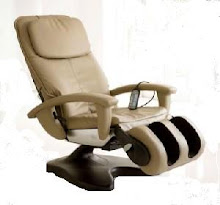Many people who suffer from lower back discomfort often sit with one of their arms bent round behind their back and “slotted” into the lumbar zone. In effect they are creating a lumbar roll or bolster with their arm. This has the effect of reinforcing the important inward curve that a healthy back should have at this position. Even so, it makes a restrictive and awkward sitting position and one that can lead to a “dead arm”.
The alternative is to buy a lumbar roll back support cushion. This is a cushion, often semi-circular in profile, that sits comfortably in the space that is created between the base of the back and the backrest of a chair. By doing this it helps maintain the natural curve of the back and in so doing it can alleviate back discomfort for a lot of people.
Other types of back cushion can work for other complaints and seat cushions in the shape of a wedge can adjust the angle between the thighs and the body. This type of support can sometimes help those who suffer from sciatica which can be worsened by having too acute a angle between the back and the legs.
To find out more about back supportive cushions you can check online, see your GP or go to specialist store.

